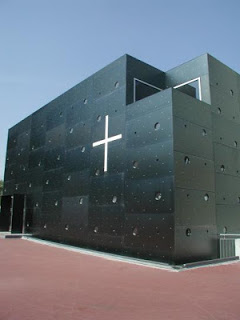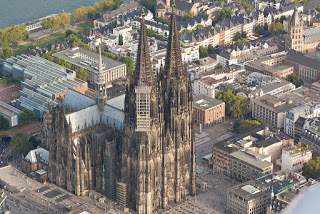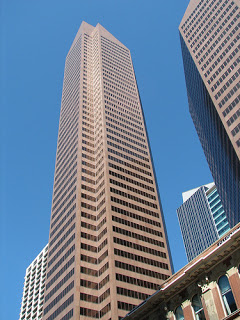–Old Errors and New Labels by Fulton J. Sheen, c. 1931.
In architecture is reflected a philosophy of
life. The philosophical basis of the contemporary world is materialism, that is,
the negation of the spirit. If, however, no other world exists, only what can
be seen, palpated and scientifically analyzed, then it is clear that there can
never be architectural ornamentation as ornamentation is a symbol of
communication with the immaterial through matter. Ornamentation implies or
assumes that there is another world beyond this around us. The buildings of modern architecture therefore
resemble glass cages and boxes of giant shoes, built on stilts. They are purely functional buildings since
the only function
in a materialistic civilization is the business or exchange of things of this
world.
invisible things, the architecture was ennobled with countless ornaments: the
pelican feeding the children with the very blood of its veins symbolized the
sacrifice of Jesus Christ; the lion breathing life into dead offspring represented
the Resurrection; the fox, peering at the door of his den, served as a prescient
warning of Satan’s traps. With his triumphal entry into Jerusalem, Our Lord
said that if the men were steadfast in their faith in God, even the very stones
would proclaim His triumph. This actually came to pass in the the Gothic
cathedrals!
today do not believe in the existence of another world, do not expect for
themselves other destination than the same of inert stones. With faith in the
spiritual lost, architecture ceases to express or symbolize.
I was unable to find this passage in the original English.





